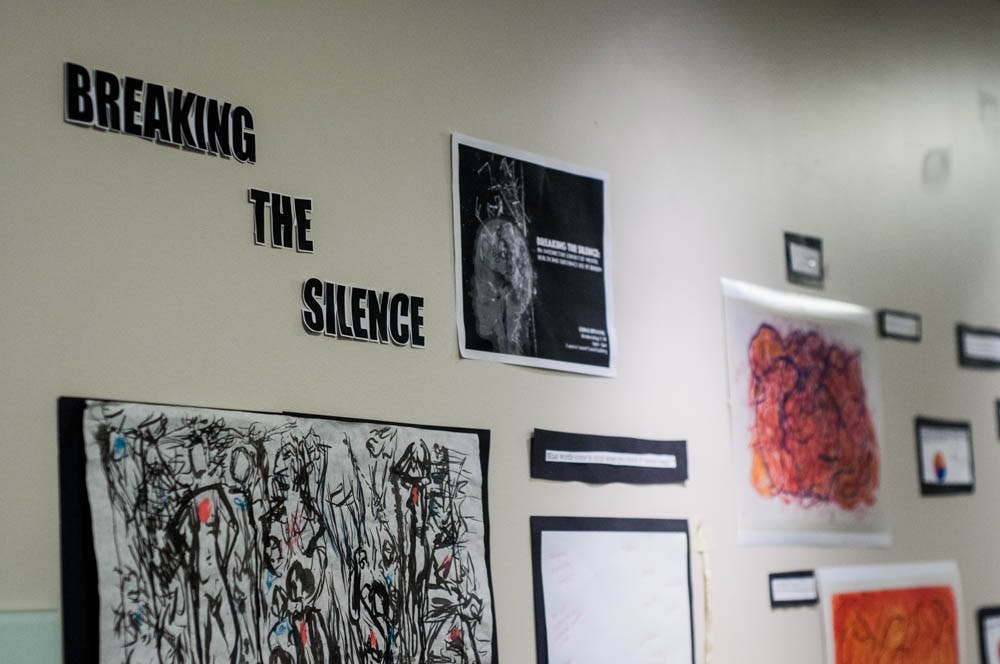An exhibit on mental health and substance abuse, organized by students in PHP 1520:“Emergency Medical Systems: An Anatomy of Critical Performance,” opened Wednesday in Faunce. The exhibit includes artwork, poems and data collected from fellow students.
The exhibit’s curators aim to provide opportunities for individuals to share their struggles, as well as increase awareness of these issues on campus.
“On college campuses, it’s important to seem like we’re okay,” said Jessica Cao ’18, one of the exhibition’s creators. She and her classmates hope that the showcase will make discussing mental health and substance abuse “less taboo” and will begin to dissolve the stigma surrounding these topics. Her classmate, Clara Mao ’18, added that the exhibit “provide(s) a space to share” experiences with and thoughts on difficult issues, while also inviting the public to learn about them.
The class project prompted students to choose a topic and find a way to engage the community with it. While the students initially considered other options, such as a panel or a movie, an exhibit seemed like the most feasible and effective means to achieve their goal. To create the exhibit, its curators interviewed health professionals, surveyed students and accepted submissions from students across campus.
“We wanted people to be free to create whatever they wanted,” said Anna Delamerced ’16. The exhibit’s presentation relied on the “power of personal narrative.” For those who struggle with stigma, “it helps to know you’re not alone,” she added.
When they first started, students in the class had trouble encouraging others to submit work to the exhibit, said Diane Na ’18. “It’s such a sensitive topic. But once submissions started coming in, it was easier to get more feedback.”
The exhibit featured unique pieces of art and poetry, such as a series of paintings completed by Corey Marsh ’17 using solely his feet.
According to one of the survey questions, 45.5 percent of respondents felt that the University’s mental health resources were not adequate for those who needed them. Other students expressed a lack of space to share about such issues, as well as misunderstandings associated with the terms “mental health” and “substance abuse.” Exhibit viewers were also invited to respond on blank posters next to the artwork with their own thoughts on these topics.
To curate the exhibit in conjunction with her class has been an enlightening experience for Delamerced. She called it a “more personal” application of the academic knowledge she and her classmates have amassed.
The exhibit will remain open to visitors in Faunce for the remainder of the week.





